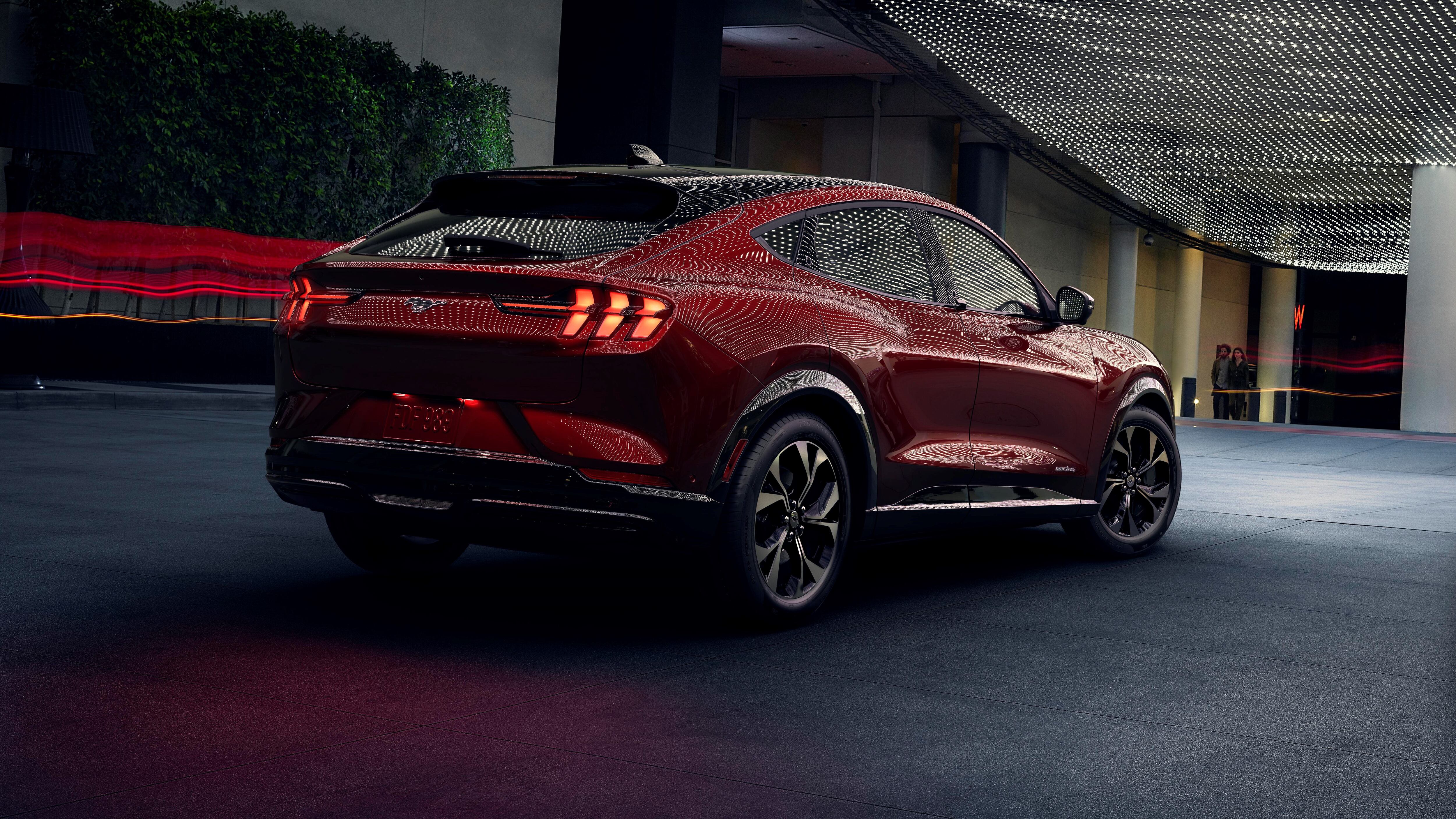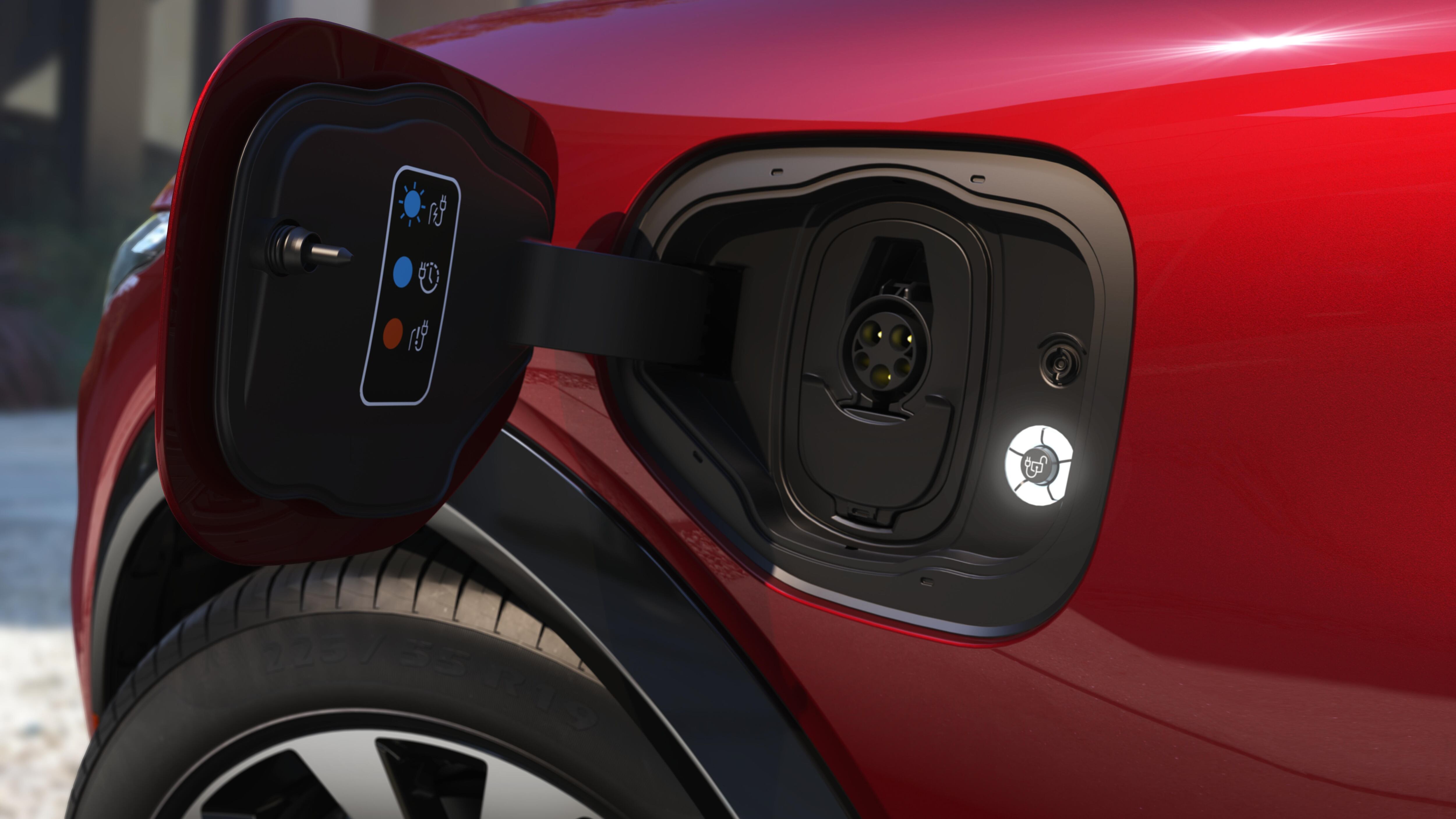LOS ANGELES — Ford on Sunday unveiled its all-electric Mustang Mach-E, a curvy four-door SUV that, with the iconic pony logo, is helping the automaker race into a new era that will be marked by an “all-in” $11.5 billion investment in 16 electric vehicles over the next three years.
In a gleaming hangar at a local airfield in Los Angeles, at an event headlined by actor — and 2018’s People’s Sexiest Man Alive — Idris Elba, Ford’s executives proclaimed the start of a new chapter for the automaker.
“This is a new direction for Ford and an important step in creating solutions for our plane,” said Jim Hackett, President and CEO of Ford Motor Company.

The Mach-E will come in five trim levels, with the first models set to start rolling off lots at the end of next year, with more scheduled to go on sale in 2021. Prices range $43,895 for the entry-level Select model to $60,500 for the top-of-the-line GT, which doesn’t include the additional $7,500 federal electric vehicle tax credit that Mach-E buyers can receive.
Tesla’s Model X SUV, by comparison, starts at $81,000, before topping out at $104,990 for the Performance edition and $138,000 for the P100D. It’s not eligible for the tax credit, because Tesla has already hit the credit’s 200,000-vehicle cap on sales.
The better comparison, though, might be with Tesla’s upcoming Model Y, a similarly priced and similarly-sized midsize SUV that Elon Musk’s company announced last week, and which Ford itself seems to see as its Mach-E’s most direct competitor, at least based on the tweet Ford issued as Musk unveiled the Model Y.
The Mach-E’s battery range starts at 210 miles when equipped with all-wheel drive or 230 miles with rear-wheel drive, and rises as high as 270 and 300 miles, respectively, with “extended range” battery options — similar to the Model X’s range span of 237 to 328 miles, depending on trim level. The Mach-E First Edition, which will be the first to debut and will be available in only limited quantities, will have an all-wheel drive range of 270 miles, with a pricetag of $59,900 before the tax credit. Ford began accepting online orders with a $500 refundable deposit Sunday night.
“You get all this exhilaration of performance, and you have room for your family, for your kids, for friends, for cargo, and you have 300 miles of range,” Ford North America president Kumar Galhotra told reporters at a press event ahead of the vehicle’s public debut.
Every buyer will get two years of free charging at any of the 12,500 public charging stations across North America that Ford is investing in – close to three times as many as Tesla. For charging at home, at the office, or on the go, the Mach-E also comes with a mobile charger capable of refueling the vehicle from either a 240-volt outlet – the kind used to power large home appliances like air conditioners or washing machines – or, more slowly, a typical 120-volt outlet. Buyers can also hire Amazon Home Services to install even faster-fueling Ford chargers at home.

Ford debuted the vehicle just steps from the campus of Elon Musk’s SpaceX – a move that, while maybe not quite as confrontational as holding the event outside Tesla’s headquarters in Palo Alto, or Musk’s front lawn, nonetheless signaled that Ford is aiming to unseat Musk’s electric vehicle company as the reigning king of EVs in the U.S.
Tesla holds about 80 percent of the U.S. electric vehicle market, which itself makes up just 3 percent of passenger vehicles in the country. However, Credit Suisse last week projected that Tesla’s shares will fall by 40 percent – largely due to Ford’s full-throated entry into the market, as well as similar, if less high-profile, moves by General Motors, which holds the No. 2 spot in the U.S. electric vehicle market and, like Tesla, has sold so many EVs that it’s no longer eligible for the federal tax credit that Mach-E buyers will receive. Fiat Chrysler will also be getting into the EV market with its announced merger with France’s Peugeot which already boasts two electric vehicle platforms. There is also a new crop of new automakers, like Rivian, that are just focusing on electric.
“It’s much easier for a newcomer to build an electric car than to build an internal combustion engine car, so we are expecting a lot of newcomers with more specialized electric vehicles,” said Guillaume Devauchelle, vice president of innovation and research and development at Valeo, a French automotive supplier that's made heavy investments in electric vehicle technology.

Ford’s move to lead with an SUV – a vehicle that’s far outpaced compacts and even full-size sedans in U.S. markets – and to brand it as the company’s first four-door Mustang signals how the company is focusing on its most iconic brands rather than trying to introduce consumers to a new vehicle.
“It could’ve been any other SUV. But we stepped back and looked at our own experience with our focus and we also looked at the experience of other OEMs who have done electric vehicles primarily as compliance plays,” Galhotra, the Ford North America president, said, referring to automakers who have introduced greener vehicles to comply with federal fleet-wide emissions standards. “And our conclusion was very obvious: We had to do something different, we had to do something more exciting, we had to do something to stand out from the crowded SUV segment.”
Ted Cannis, who is overseeing electric vehicle development at Ford, wrote in a blog post earlier this year that educating consumers about electric vehicles – and dispelling misconceptions about performance, reliability and battery life – is a consistent challenge, one that Ford is apparently seeking to surmount by introducing electric versions of its most famous vehicles.
As officers with the Hawthorne Police Department sat outside the hangar in a Ford Crown Victoria and Ford Explorer – a sergeant later got a close-up look at one of the Mach-Es, one of the perks of wearing the stripes – Ford executives described how the company was planning next to deliver an electric version of the F-150, not only Ford’s best-selling product but the most popular vehicle in the U.S., as well as its popular Transit utility van.
“We are going to play to our strengths, the things that brought us to the party: Pickups, commercial vehicles and the customers that we know well, performance vehicles, utilities,” Cannis said. “We’re going to lean into the iconic name plates. Now you know: Mustang, F-150 … People know, and they have the expectations; it immediately cuts through the clutter about what it’s supposed to do and what Ford is promising to the customer.”
The Mach-E boasts the fixings of a performance vehicle – leather seats, high-end sound system – while cribbing three of Tesla’s most distinctive features: the center-dash large-screen tablet that controls everything from the radio and navigation to air conditioning and interior lighting; an expected “hands-free” cruise control that Ford says will best Tesla’s vaunted “Autopilot,” and which will be added to the vehicles via an over-the-air software update; and a trio of driving modes to rival Tesla’s famed “Chill” and “Ludicrous” settings: a standard “engaged” mode that handles like a typical Mustang, an easygoing “Whisper” mode, and a pedal-to-the-metal “Unbridled” mode (one display vehicle, apparently behind on a software update, revealed that an earlier version of the mode was called “Stampede”).

The vehicle is the product of a yearslong skunkworks effort within Ford. In addition to Mustang’s distinctive tri-bar tail lights, headlights and wide stance – engineers kept referring to the rear half’s “haunches” – the 15-person team also considered what sound the near-silent electric vehicle it would make, taking notes on everything from the electric Formula E racing series to movies like Blade Runner and Christopher Nolan’s Batman trilogy.
In a ride-along with a professional driver, speeding along local roads around the airport – past gas stations advertising prices of $4 per gallon and with fellow drivers snapping photos with their phones – and later slaloming around traffic cones on an airport access road, the surge of electron-fueled motor swelled to a deep-throated electric hum.
The Mach-E includes quirkier features, too: A series of futuristic bleeps and bloops replace the typical startup and seatbelt warning chimes; a “frunk” beneath the hood able to hold extra luggage or, thanks to drains at the bottom, ice for a tailgate; and doors that open at a button-press.

Ford actually introduced its first all-electric vehicle, the Ranger pickup, in 1998 but stopped production just four years later. In 2011 it debuted a fully electric version of its compact Ford Focus, but discontinued that model last year.
Now Ford is betting on dramatic growth in the electric vehicle industry, and with moves from other automakers, it’s not alone. The sector last year, while still just a sliver of the U.S. market, grew by 81 percent. Projections by experts widely vary; Ford said it expects to see EVs jump from 3 to 8 percent of the U.S. market by 2025 and, buoyed by stronger government incentives, make even bigger leaps from 2 to 30 percent in Europe and from 4 to 14 percent in China.
“Even if it’s half that,” Cannis said, “it will be a lot bigger than it is today.”












